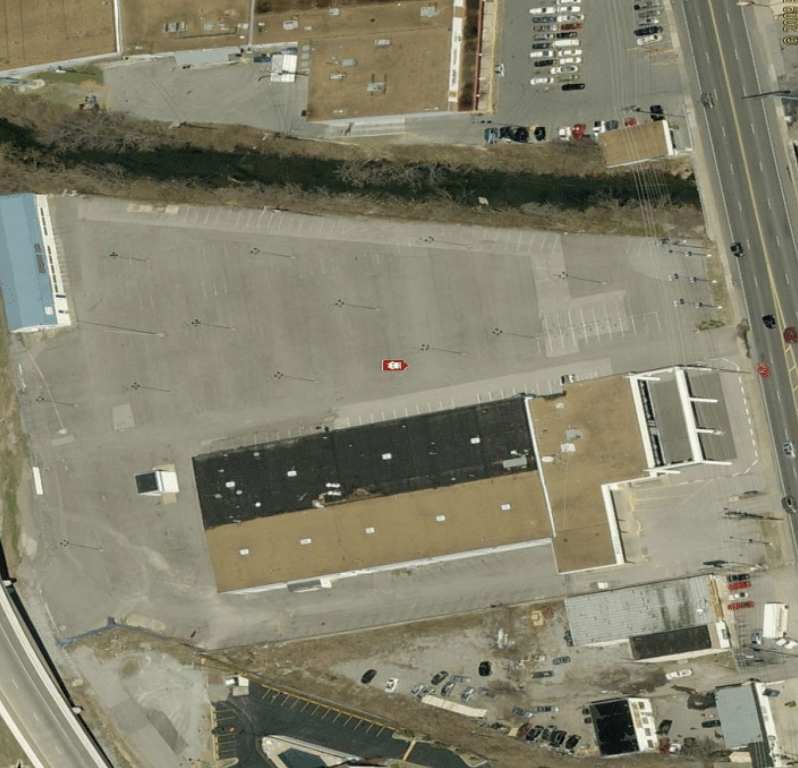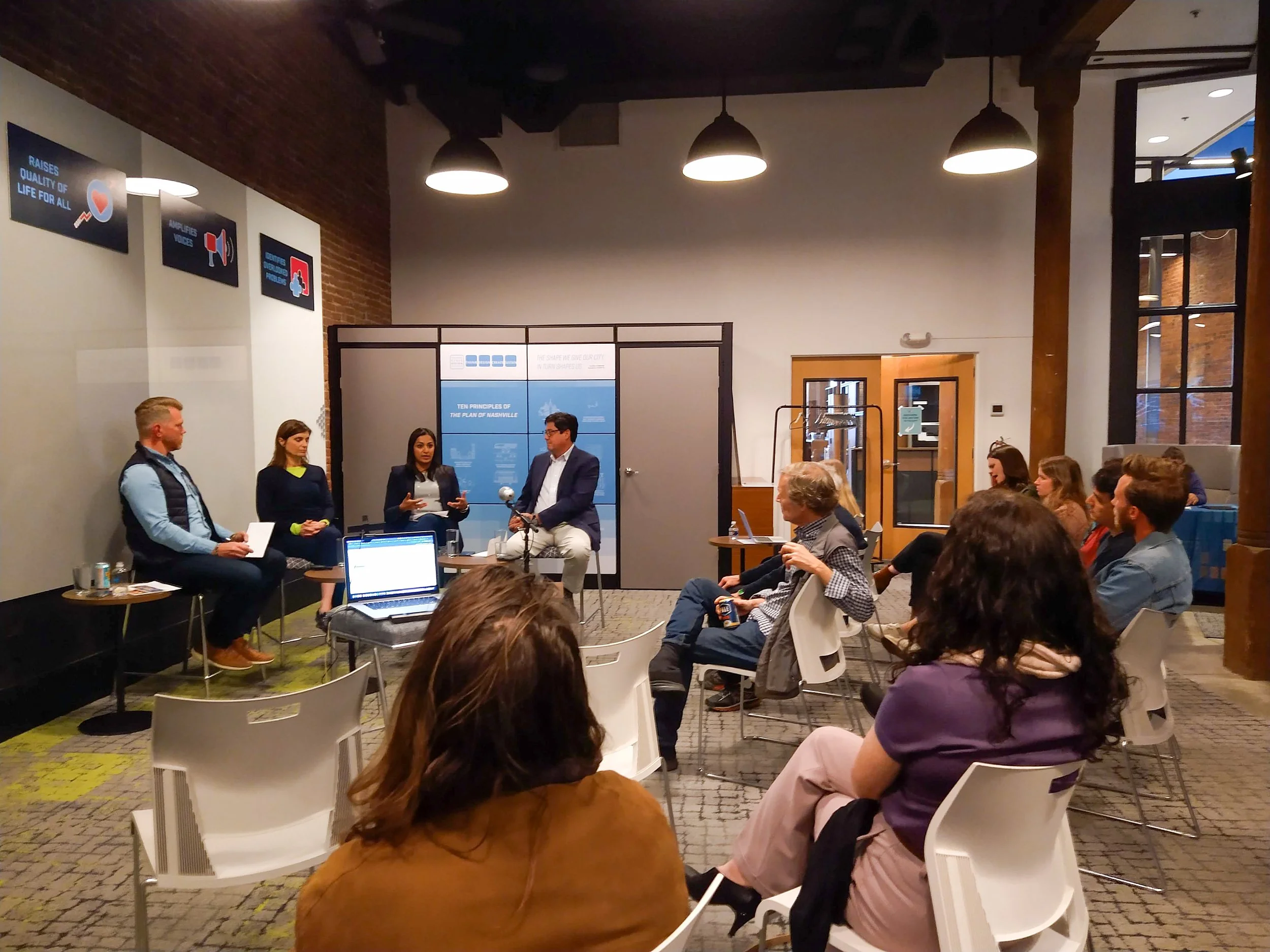Pursuing Preservation
By Savannah Dupper, Writing Coordinator
3 min read Vanderbilt Women in Business Extern, Savannah Dupper, reflects on our third event in the Guiding Principle series, Preservation in Civic Design. Read on to hear some of the takeaways. Follow @civicdesignctr on Twitter #PreserveCivicDesign to review the Live Tweets from the event.
Guiding Principles Pillar #3: PreservationFollowing Foundation, we must always consider Preservation of our natural environment and promotion of good civic design. We must make sure that there are standards in policy and zoning to protect these elements, but those standards must be adaptable if they no longer benefit or represent the community.
Preservation across industries
José González signs the Guiding Principles poster
Advocating for preservation within a community helps to protect its identity and its history. Creating infrastructure that preserves nature, mains historically and socially significant structures, and promotes local economies contributes to the conservation of a city and its unique qualities.
Executive Director of the Cumberland River Compact Mekayle Houghton, Managing Director of the Hermitage Hotel Dee Patel, and co-founder of non-profit Conexión Américas José González are knowledgeable about preservation in each of their fields. Throughout their panel discussion, they provided important perspectives on preserving the natural environment, spotlighting history through design, and developing equitable community programs. “Preservation” is a term that is very different or hotly debated dependent on who you are speaking with, so Gary’s opening question to the panelists asked, “What is preservation to you?”
Creating Green infrastructure
Prioritize design that alleviates impact on the environment’s natural resources
“It is possible to welcome development and be a steward of the environment at the same time. Environmentally healthier areas are prettier and more enjoyable to live in.”
A map of impervious and pervious ground in Nashville reveals at-risk areas of the Cumberland River.
Mekayle Houghton, Executive Director of the Cumberland River Compact, discussed the importance of developing landscaping practices and policies that work to sustain local resources. Nashville’s Cumberland River, one of our most important natural resources, is being negatively impacted by new infrastructure made up of impervious ground. This impervious ground prevents the natural soaking of rainwater into the ground, making it difficult to filter impurities entering the river.
Green infrastructure, in addition to improving water quality, can better integrate urban environments with nature and improve the visual design of a city. Houghton cited her involvement in a redesign of the East Nashville Police Precinct as evidence of the importance of green space.
An aerial shot of the East Nashville Police Precinct before a green infrastructure renovation
An aerial shot of the East Nashville Police Precinct after a green infrastructure renovation
celebrating history in Design
Recognize historic and socially significant distinctions in community design
“We all have a duty to be a stakeholder in the city we live in and the city we work in.”
Celebrations take place at the Hermitage Hotel after it was designated a national landmark.
Managing Director of Nashville’s Hermitage Hotel and Civic Design Center Board Member, Dee Patel, understands the importance of preserving history. She told the story of the Hermitage, which in the 1970s, was at risk due to its lack of sustainability. Preservation advocates got the hotel listed on the National Register for Historic Places, and it was saved.
When she became managing director at the hotel, Patel’s goal was to have it be designated a historical landmark due to its connection to the women’s suffrage movement and the passage of the 19th Amendment. In 2020, the hotel was designated a national landmark, and today it continues to modernize its design while still preserving its connection with different generations.
Patel has also been involved with advocacy around the preservation of Church Street Park, which is adjacent to The Hermitage Hotel and the Historic Capitol Corridor where suffrage leaders marched to campaign for the right to vote over a century ago.
The anniversary of the ratification of the 19th Amendment is celebrated at the Hermitage, which was a popular meeting place for activists of women’s suffrage
Dee Patel helps unveil the historical marker on Church Street Park adjacent to the Hermitage Hotel with Deputy Mayor Brenda Haywood, Council Member Freddie O’Connell and other important figures
bridging cultural and economic gaps
Promote community-supported, local economies to be equitable and sustainable.
“This is a place that allows for the preservation of families and it also helps to preserve the vibrancy of the community. It’s become an anchor in that part of the city”
A tile mural on the outside of the Conexión Américas community center, Casa Azafrán
A co-founder of Conexión Américas, José González discussed the importance of developing equitable economies, especially for people of color and immigrants. Within Conexión Américas, a nonprofit organization aimed to create connections between Latino and native-born residents of Middle Tennessee, the economic, social, and civic dimensions of immigration are addressed.
Within the 40,000 square foot community center of Casa Azafrán are co-working spaces for non-profits which include programs for entrepreneurship and home ownership, as well as a Culinary Incubator for restaurant start-ups. In addition to providing a space for small businesses, this incubator facilitates intercultural connections.
The Civic Design Center is excited to partner with González on the Cultural Corridor Project, which will create visions for a new type of development in line with the Principles! The goal will be to intentionally preserve the local Nolensville Pike economy, culture, and community, focusing on 3 key elements: housing, education, and food/business/entertainment.
Watch the Full Program
My Takeaways
Council Member Nancy Van Reece mingles with fellow attendees, including our CEO, Gary Gaston
Though there are a plethora of ways to define preservation, a consensus among the panelists was that identity is at the core of preservation. In Nashville, where the eclectic identity of our city is what makes it unique, advocating for preservation in design is paramount. Preservation manifests in many different practices, from green infrastructure, to community outreach, to interior design. Learning about these practices and the deeper issues surrounding them was impactful.
Audience, including former panelist, Jessica Dauphin, listening closely to the panelists’ discussions
Do you agree to advocate for preservation in civic design within your industry?











